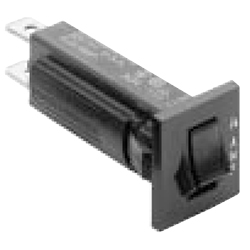|

Product Links 
|
|

Inside SRI

|
| SRI-Newsletter |
 |
Subscribe to our newsletter to receive monthly specials, manufacturer's feature, and electronics news via email. |
|
 |
|
See Our latest release of SRI-Newsletter here
 |
|
View Our List of Archived Newsletter Articles
 |
|

SRI Links

|
|
Visit our Sister Site,

Distributor of
Industrial Products
| |
|
Web Search ..
Powered by;

|
|
 |
 |
 |
 |
 |
An Ultra-Bright Future for LEDs
You don't need to look far to see where LEDs have already replaced the light bulb. While driving around your city, you may have noticed the traffic lights, billboards, and even many lights inside your car have been replaced by LEDs. Now, innovative car designers and engineers are turning to clusters of high-brightness LEDs to do the job of conventional xenon and halogen bulbs currently being used for headlights and brake lights. Proponents of the technology say that there is no light source on an automobile, including headlights, that cannot eventually be replaced by LEDs and recent performance improvements and moves toward standardization are hastening what they consider an eventuality.
Safety First
One consideration that designers like about LEDs is the additional safety features that may help to prevent accidents. They have a 250 ms faster light-up (rise) time than conventional bulbs. This translates to the stopping distance of a vehicle traveling at 65mph being reduced by 25 ft if it's following a car fitted with LED-based brake lights. Headlight LED arrays could control beam patterns by automatically switching independent LED chips on and off. This leads to some unique and desirable capabilities like side lighting that illuminates curves when turning without using moving parts or even automatic beam leveling that prevents blinding oncoming drivers. Similar arrays can already be seen on school bus brake lights that pulse to attract attention. LEDs allow for many other enhancements besides safety too.
Flashy Looks
Most lighting enthusiasts prefer automotive lighting that flashes on and off, up and down, or back and forth, over automotive lighting that simply lights up and remains steadily on. Where slow, power hungry neon lights dominated the flash market for autos, LEDs could easily take over. Most enthusiasts feel that flashing automotive lighting products are not only more attractive and exciting, but also more lively. Because LEDs are not affected by constantly flashing on and off like regular bulbs and since they reach full brightness almost instantaneously, we will definitely see more flash applications. Go into any auto parts store and see for yourself.
Cost Hurdles
Because the incandescent bulb has remained virtually unchanged in the last 20 years, the technology is cheap; but many manufacturers are looking at the long-term cost benefits and performance enhancements of using LEDs. Because LEDs dim slowly over their long lifetime rather than suddenly burning out and because they are extremely resistant to vibration, they can easily last the life of a vehicle. As the ratio of lumens per watt continues to rise, the cost will go down. Like all electronics, LEDs rely on high volume - as volumes go up, prices will go way down. Because of the up-front cost increase, middle to upper level car models will likely see the benefits first.
What's Next?
Many experts agree that we will likely see a car with 100% LED lights inside and out within the next few years. According to JimTrade.com, Bob Steele, director of optoelectronics for market research firm Strategies Unlimited expects worldwide sales of high-brightness LEDs to grow about 14 percent annually over the next five years, from US$3.7 billion ($4.8 billion) in 2004 to 7.2 billion (9.4 billion) in 2009. With further developments in LED technology like the Organic Light Emitting Diode (OLED), we could also see the current LCD displays replaced by more efficient, light, and flexible displays.
|
**Specifications subject to changes**
|
|
 |
|

Product Spotlight
 |
|

|
Piezo Electtrics with internal Circuitry @ 30cm dB- 12VDC - 4000Hz - Circuit, Pins
$2.12
MORE INFO

More Intervox 
|
|

|
Snap-in mounting, Push-to-reset Circuit Breaker Relay
$0.00
MORE INFO

|
|

Sponsored Ads
 |
|